Centipedes are the ultimate “creepy crawlies.” Their many-legged bodies are more often the subject of horror than fascination. In spite of this, there is much about the centipede that is both interesting and unique. Nature’s creatures come in all shapes and sizes, and even those that give us the willies have valuable lessons to offer!
Table of contents
Centipede Symbolism and Meaning
Centipedes and millipedes are multi-legged predatory arthropods which live in a variety of different terrestrial habitats.
These bugs are found in almost every region of the planet, including, even, the Arctic Circle. (1) It is estimated that there are as many as seven thousand species of centipede on the planet, however only about three thousand have been discovered and recorded. (2) Centipedes live in soil, under rocks and dead wood, and inside logs. Because they live in dirt, centipedes are often associated with death and decay.
Due to its preference for hidden places, the centipede is sometimes associated with the afterlife or the “Underworld.” This association sometimes connects centipedes to occult forces and taboo subjects.
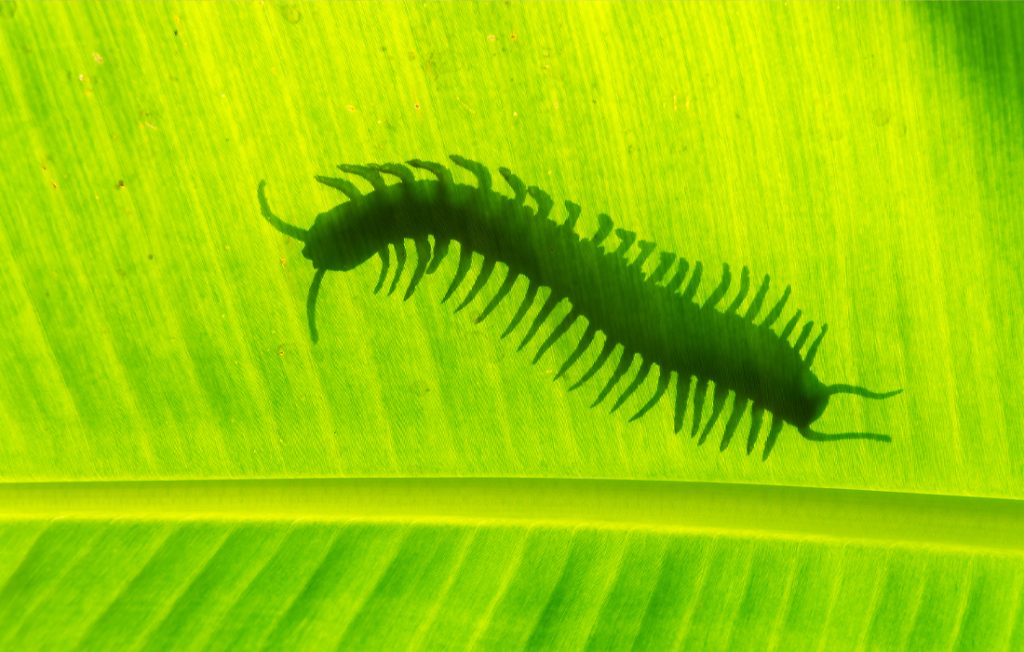
The centipede’s unusual anatomy connects it with speed and dexterity. The centipede’s venomous bite associates these fearsome arthropods with both sickness and medicine.
Both centipede and millipede are symbols of good luck, energy, and healing. In addition, it is said that centipedes are among the only things that dragons fear. So, centipedes represent the power and ferocity that even the smallest of creatures can embody.
Finally, perhaps the strongest association with centipedes is fear itself. Centipedes represent anxieties, phobias both rational and irrational, and nightmares. Because of this, centipedes can also represent the courageous act of confronting one’s fears.
Centipede Native American Symbolism
Insects play an essential role in Native American folklore. Navajo and Zuni mythologies are very complex and include many legends involving insects depicted as monsters.
One of the stories told by the Navajo elders involves giant centipedes born from the blood of the primordial monsters who once ruled the earth. These giant centipedes were said to be able to jump high and launch themselves at the vulnerable necks of their victims. The big centipedes are associated with evil, ancient power, and the Underworld. (3)
The Zuni population also have stories featuring a giant centipede which emerged from the Underworld. An important shamanistic element, the centipede symbol, is present in Zuni art, such as the rock art from the Upper Little Colorado River region. (4)
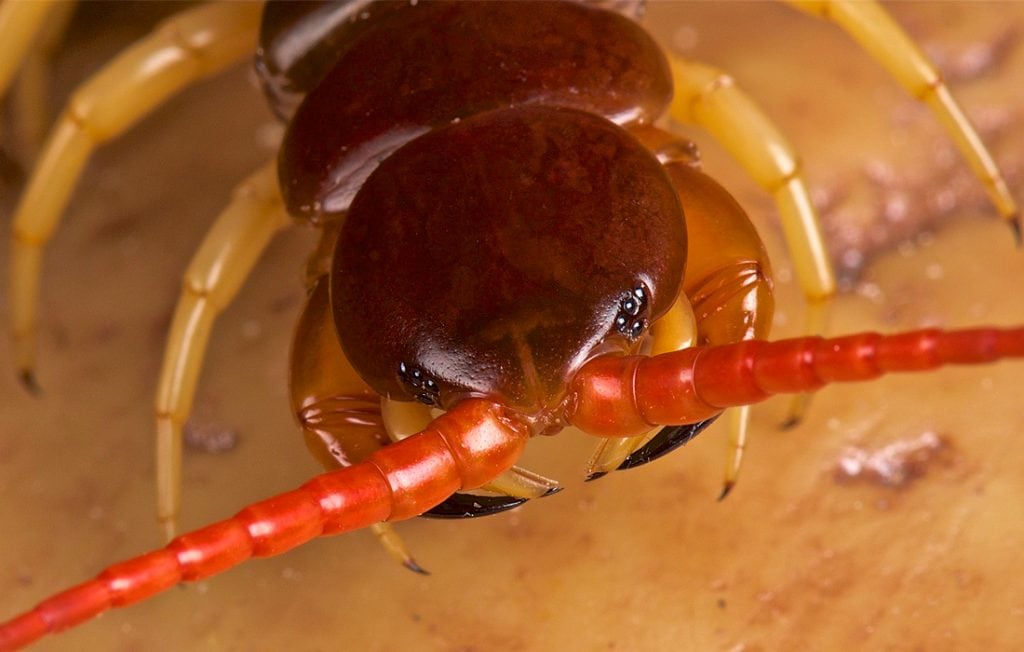
One Zuni folk tale involves the young brothers Ahaiyuta and Matsailema, who stole the lightning-shaft and the thunder-stone from the Gods of Rain. The two boys were helped by their grandfather, the Centipede, who was larger back then.
When the Gods of Rain discovered the theft, they punished the Centipede by handing him the lightning-shaft, which burned him until he became smaller. (5)
The Native American symbol of the centipede is deeply connected with shamanism. Although sometimes thought of as fearsome and monstrous, centipedes are also connected with wisdom, longevity, and foresight.
Centipede Eastern Symbolism
The Centipede is an important insect for many Asian cultures. In traditional Chinese medicine, the centipede is significant and powerful. It is thought to have the ability to treat convulsions. (6)
The Centipede is part of the Five Poisons, a group of five venomous creatures often mentioned in Traditional Chinese medicine, martial arts, or Feng Shui. Depicted on amulets and talismans, the centipede’s role was to represent the liver function and to clear toxins from the body. (7)
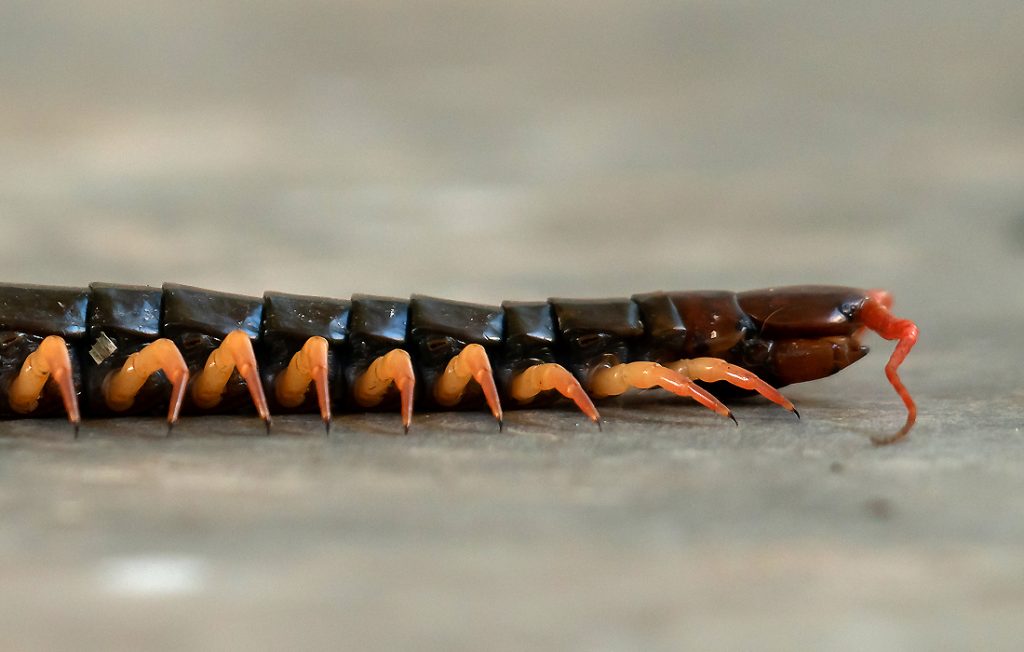
In Japan, the giant centipede, Omukade, was the messenger of the god of warfare, Bishamonten. Omukade is a Yokai (supernatural monster) in Japanese mythology, and it was believed that Okumade had the power to hunt and eat humans and dragons alike. Okumade’s one weakness is human saliva. Omukade’s name is actually derived from “mukade” which is the Japanese name for the Giant Centipede. (8)
Centipede Christianity symbolism
Centipedes and millipedes are not frequently mentioned in either the Bible itself or Christian religious iconography. When centipedes do appear, they are usually representative of sin, evil, and death.
Due to its venomous bite, the centipede may be connected with death and witchcraft. Lurking in damp, dirty places, the centipede may also be connected with Hell or Purgatory
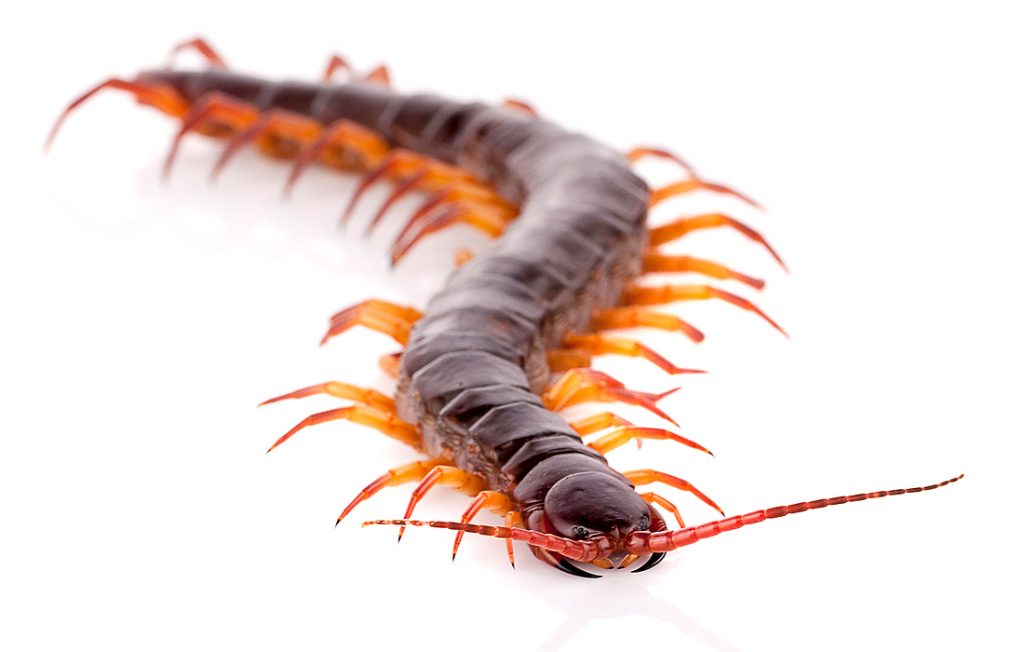
The Rutland Psalter, a Medieval manuscript of the Psalms with many beasts, monsters, and animals drawn in the margins, depicts a many-legged dragon. This creature is reminiscent of the centipede and is certainly evocative of the centipede’s hellish Christian reputation. (9)
Centipede Celtic Symbolism
Centipedes and millipede are not common figures in Celtic folklore. However, it seems that the centipede can at least be thought of as a symbol of death.
The Irish Banshee was often depicted as an older woman surrounded by creepy crawlers such as spiders and centipedes. The cry of the Banshee is thought to be a harbinger of death. (10)
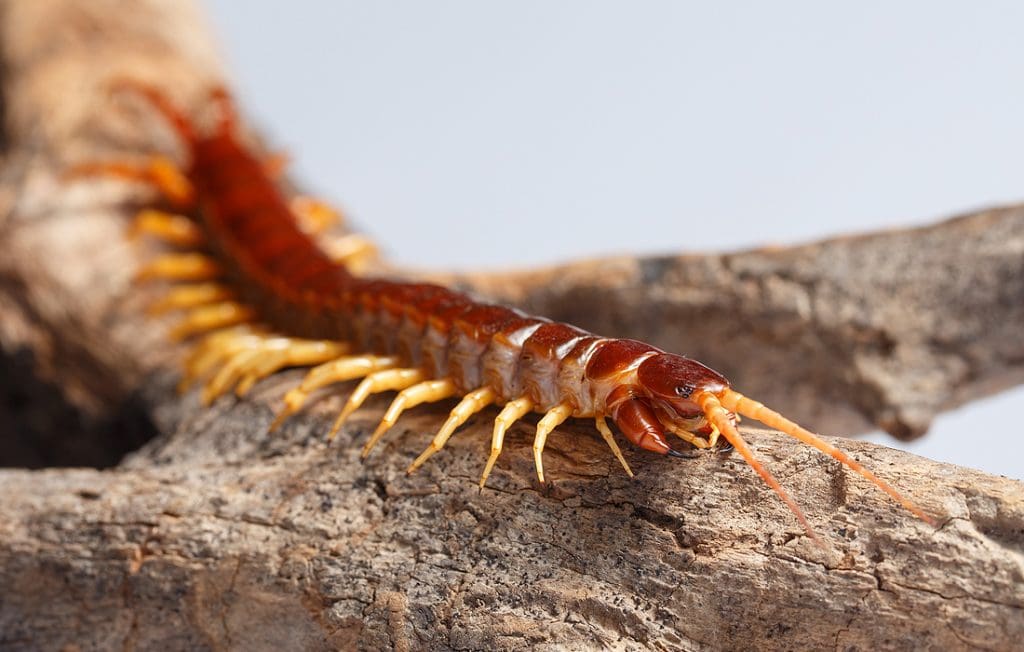
It is the habit of the millipede is to curl in a spiral when attacked. The Celtic spiral is a symbol of expanding consciousness. So, millipedes may have been thought of as symbols of wisdom, introspection, or arcane knowledge.
Centipede African Symbolism
Millipedes are important creatures for many African peoples. A particular species, the giant African millipede, is sometimes kept as a pet. The people from the East coast of Africa call it “shongololo.” (11)
Millipedes are decomposers, feeding on rotten leaves and tree logs. One legend from Africa describes millipedes as failed messengers of immortality.
In this story, creator sent the millipede to tell people that they would never die. Along the way, though, the messenger millipede grew hungry and stopped to eat. While the millipede took its time eating, the creator sent a second messenger, a chameleon, to tell humanity that they would not be immortal after all and that they would eventually die. Because the millipede was lazy, the chameleon arrived first and the millipede was far too late to give humanity the good news.
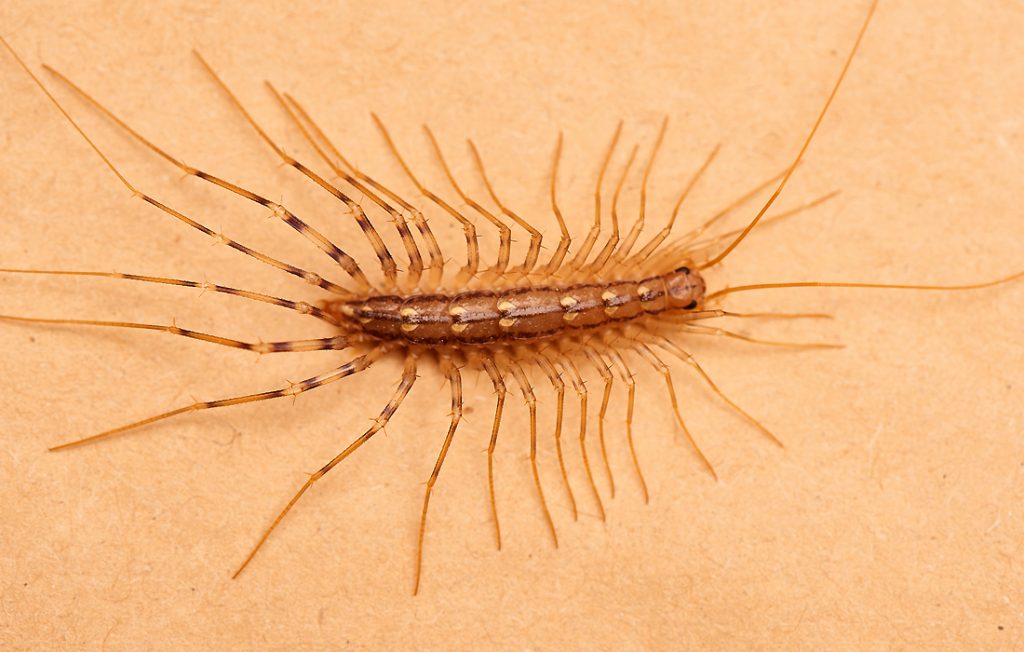
Although the many-legged messenger arrived too late to deliver immortality, the millipede spiritual meaning is still related to longevity and good luck. (12)
The old Egyptians worshipped the centipede god Sepa, sometimes referred to as the “centipede of Horus.” Ancient Egyptians noticed that insects fed on the corpses of the dead, but that the centipede hunted these insects, so the centipede was thought of as a protector of the dead. Sepa was thought to prevent venomous attacks from creatures like snakes. He was also connected with fertility. (13)
Centipede in Dreams
Centipedes in dreams might feel intimidating or scary, but depending upon context, such dreams might actually deliver messages of positivity or good fortune.
Centipedes in dreams often represent hidden things. A centipede dream may relate to a secret or repressed desire or trait. Although confronting hidden aspects of oneself may be uncomfortable, it is ultimately very rewarding and may result in a more complete knowledge of oneself.
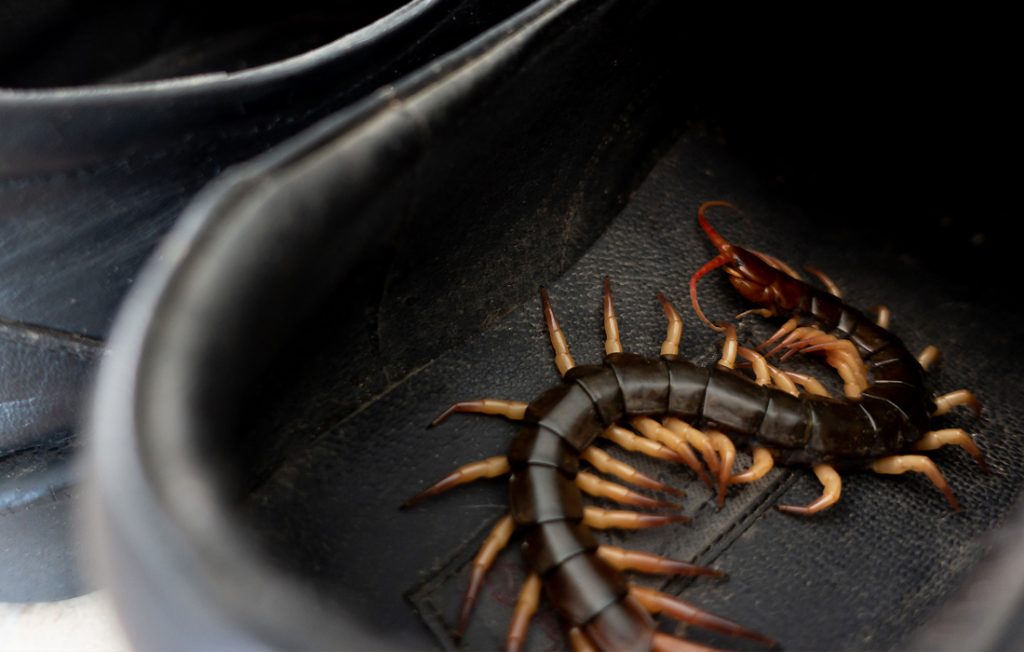
A centipede dream may also represent forward progress. This is due to the speed and maneuverability of the centipede. If you’ve been dreaming of these skittering arthropods, then it is a good reminder to focus on your goals in order to progress.
Many centipedes appearing in a dream may represent liars in one’s life. Be careful not to trust anyone who keeps dangerous secrets from you.
Centipede Encounters and Omens
The centipede is the subject of many superstitions. Depending on the culture and region, seeing a centipede may be either a good or bad omen.
For Korean people, a centipede encounter may be a sign of good luck and wealth. A centipede’s appearance in one’s house may signify prosperity and wealth on the horizon. In fact, centipede, in Korean, means “money bug,” so killing a centipede might just be a bad financial move!
The people of Martinique have a different opinion. In this region, it is thought that if you kill a centipede, you will receive money. Consequently, people find great pleasure in killing these creatures. (14)
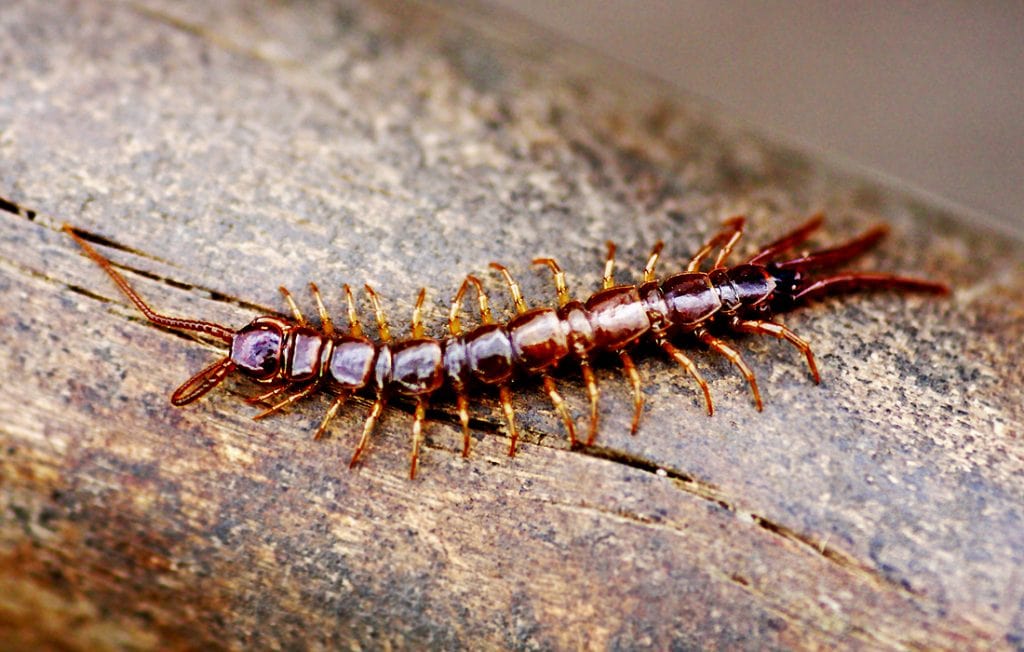
African people, as mentioned above, often keep giant millipedes as pets. In many regions of Africa, a millipede in one’s house is a sign of good luck and joy.
Centipede Mythology and Folklore
Centipedes often appear in mythology as monstrous creatures. From the giant Japanese Centipede Omukade to the strong Egyptian god Sepa, thes many-legged bugs appear in several myths and legends around the world.
An ancient Korean legend features the centipede woman who competed with the serpent to ascend to Heavens. (15) In this story, a poor man unable to provide for his family decided to climb the mountain to die there. On the road, he meets a woman who invites him to stay with her. The man accepts but after a while he starts to miss his family.
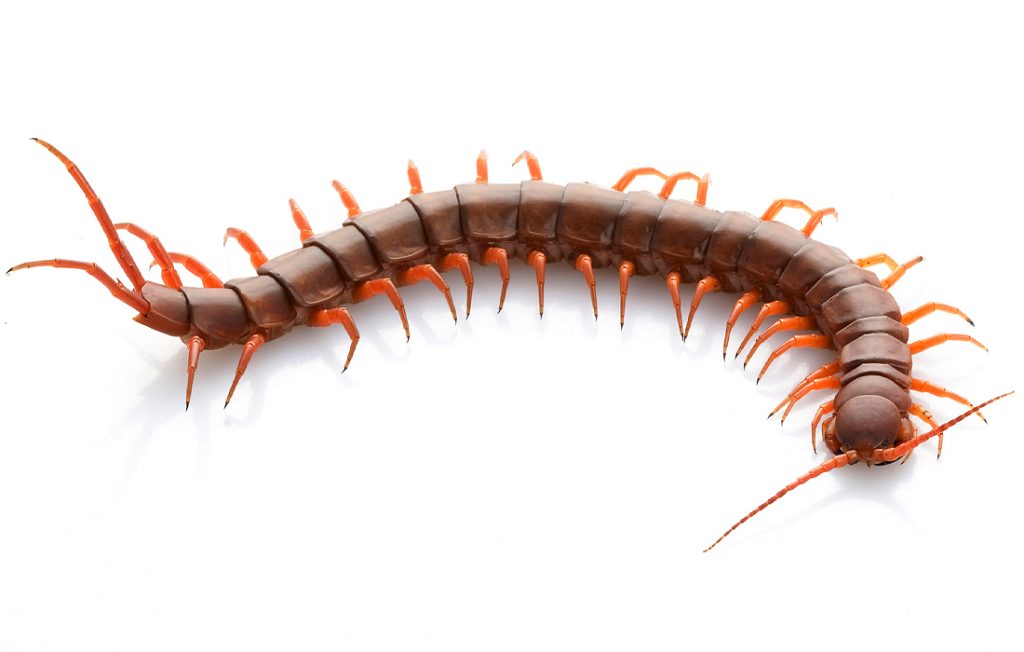
The woman lets him go home after she warns him not to listen to anyone else on the road. The man arrives back at home and learns that his family is fine with the help of the mountain woman. He decides to return to her and thank her for her help. On his way back to the woman, he encounters a serpent which took the form of a dead ancestor. The snake tells him that the woman is a centipede and to kill her. The man refuses. With the help of the man’s trust, the centipede ascends to heaven. (16)
Hawaiian centipede myths feature the trickster Iro who was betrayed by his birthmark in the shape of a centipede. (17)
Centipede Spirit Animal
The centipede spirit animal is connected with balance, moderation, health, and efficiency. People with the centipede as their spirit animal tend to be level-headed and judicious.
If the centipede is your spirit animal, then you are naturally inclined towards financial success. The centipede has a natural talent for attracting wealth, but may be hurt by its laziness and greed. Make sure that you work hard to earn your goals so that you can attract rich experiences and relationships into your life instead of just money.
Centipede Totem Animal
Centipede animal totem belongs to those able to move through life with ease and grace. The centipede or millipede people possess the ability to coordinate their talents to enhance success.
As the Centipede grows more legs as it matures, people with this totem might be late bloomers. People with the centipede or millipede totem animal keep their calm in extreme situations and maintain their laser focus. People with the centipede totem crave stability and, despite their qualities, are shy. In an attempt to avoid the spotlight, they might become a bit reclusive.
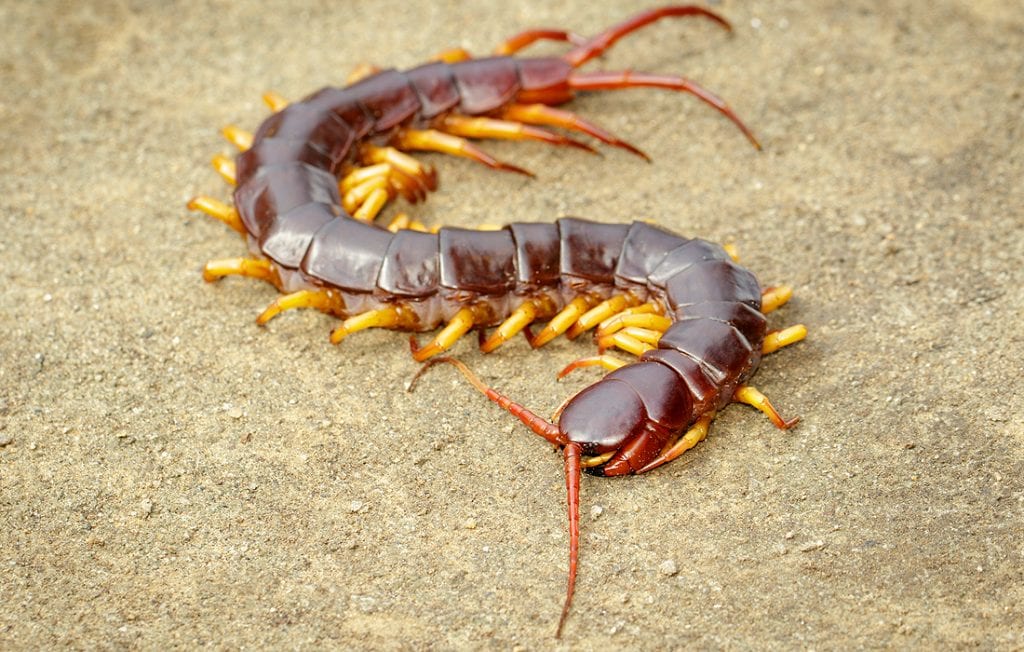
In Eastern culture, the centipede is a powerful animal associated with war leaders because frightens even the bravest of beasts.
When attacked, the millipede curls up in a spiral. People with the millipede totem tend to be drawn to patterns and puzzles. They can be very creative despite having trouble expressing themselves.
Centipede Power Animal
People should summon the centipede power animal whenever they need guidance to overcome obstacles. The centipede power animal can help you to find your hidden capabilities in times of need.
The centipede power animal enhances focus and brings out hidden potential. This can be especially helpful during periods of crisis. The centipede helps you endure difficult situations.
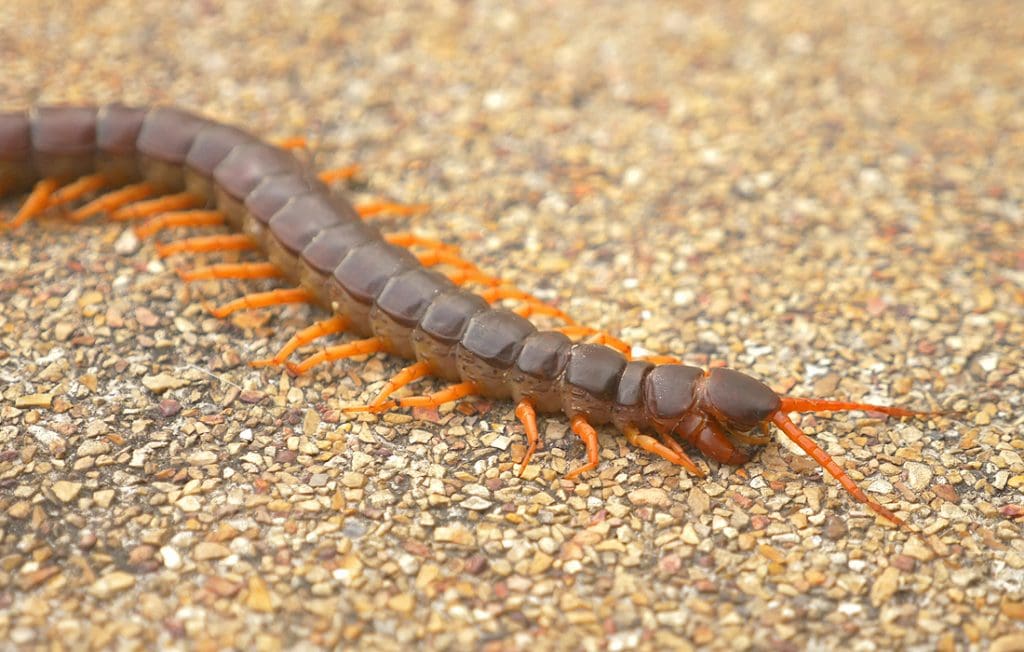
The centipede is a symbol of coordinated efforts. If you are a dancer or athlete, the centipede can be especially helpful. Moving all of its legs in sync, the centipede inspires us to keep up with the complex dance of life.
Centipede Tattoo Meaning
Centipede tattoos may seem creepy, but many people, due to cultural reasons or just preferences, choose centipedes as positive tattoo subjects.
A centipede tattoo may be chosen as a symbol of protection, especially for travelers. It may also represent longevity, healing, or growth.
The centipede, is also linked to death. A centipede tattoo may act as a “memento mori,” or a reminder that death claims us all so we must live in the present.
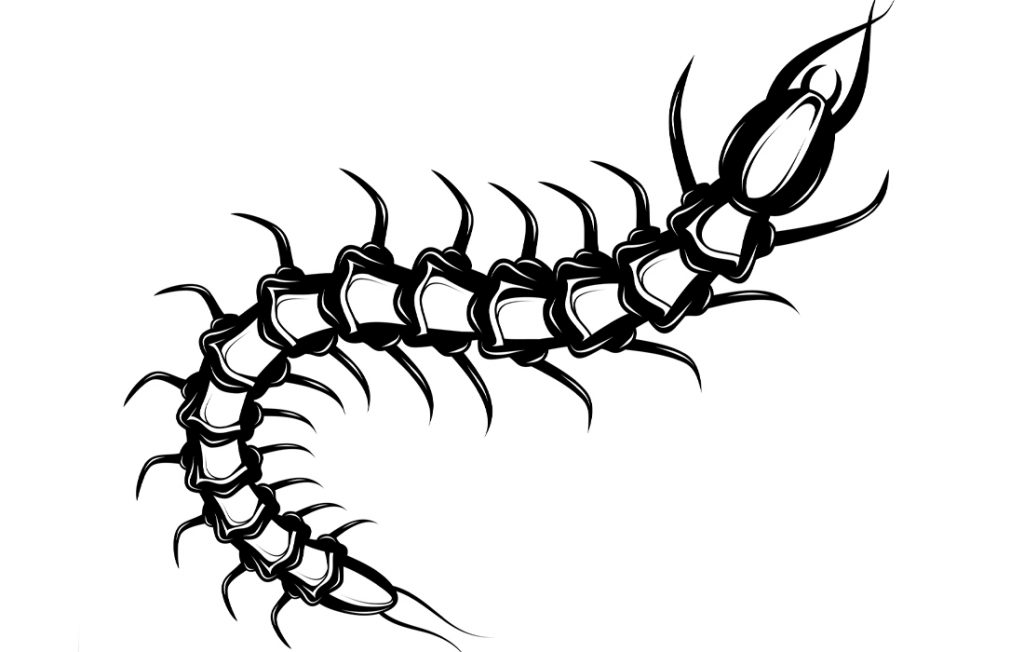
The shape of the Centipede makes it great for any spot on your body. People usually pick the back or arm to display their centipede tattoo.
Conclusion
While centipedes may not ever be your favorite animal, it is important that we learn about and appreciate even the creatures that aren’t exactly cute and cuddly. We sincerely hope that you found something to appreciate about the centipede in this article. Perhaps the next time you cross paths with these bugs, you’ll think about their unique virtues rather than just their skittering legs!
Related
